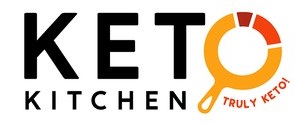3. Track Your Macros
The current research data suggests that we tend to underestimate how many calories we eat. At times, the difference between estimated calorie intake and actual calorie intake is so profound that you may think you are eating much less than before but you are still gaining weight.
In fact, many of us will have plenty of low-calorie days where we do lose a bit of weight, but then our subconscious weight-regulating mechanisms will kick in to motivate us to eat more the following day. This will cause you to either gain more weight or hit a weight loss plateau that you just can’t seem to break.
The worst part is that we are typically never aware that this is happening, and we start to blame ourselves or the diet when the truth is that we just need to take an objective look at how much we are eating.
One of the best ways to track what you are eating is by using a calorie tracking app and a scale. By using both, you will be much more accurate in knowing what you are consuming and have all the info you need to start losing weight consistently again.
When it comes to tracking calories, I prefer to use MyFitnessPal (for general macro tracking) and Cronometer (for more specific macro and micronutrient tracking). If you’d like to get started with tracking your calories open to using this application.
It has everything you need to know so that you can set up MyFitnessPal and Cronometer for your specific macronutrient needs.
To find out what your calorie and macronutrient needs are, plug your info into keto calculator.
It will tell you exactly how many calories and grams of fat, protein, and carbs you need to eat on a daily basis to get the results you want.
Another way to increase the accuracy of your calorie tracking is by using a food scale. Most people measure the amount of food they eat by guesstimating – which typically causes you to eat more calories than you intend.
There are certain things I look for when buying a scale, and most importantly include:
Having a conversion button. Most calorie-tracking apps and websites use a mixture of units. Having a conversion button on your scale can make it much easier for you to measure your food. A gram to an ounce and ounce to gram conversion button is the one that I most commonly use.
Automatic Shutoff. Make sure you research the scale you are buying. If the scales have an automatic shutoff, it can be troublesome to properly measure your food. Try to find scales that allow you to program the automatic shutoff or require you to manually turn it off.
Tare Function. Being able to place bowls, plates, and utensils on your scale makes it a lot easier to weight things out. Make sure that your scale has a tare option, which will allow you to place an item on the scale and revert back to 0.
Removable Plate. Cleaning scales can be a huge hassle when dealing with messy foods. Double-check that the scale you are buying has a removable plate for easy cleaning.
Once you start tracking your food consumption more precisely, you can almost guarantee that you will get the results you want.
However, there is one crucial caveat. We cannot ignore how much our food environment impacts what we eat and how much we eat. Even with a scale, an app, and a keto calculator, it is still possible to cheat — especially when you are traveling or have easily accessible “cheat” foods in your house.
The rest of the text is on the next page




Leave a Comment